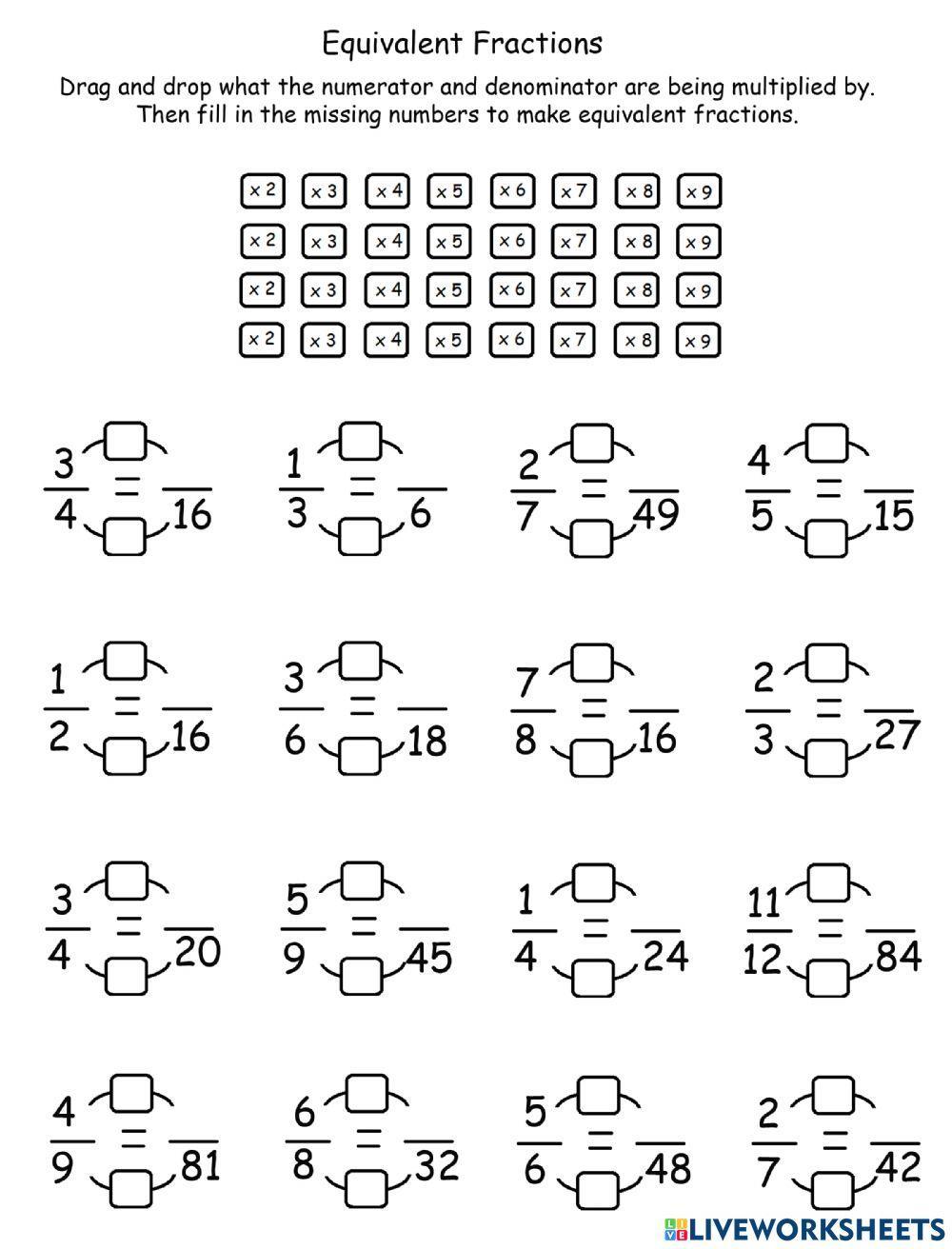Loading ad...
Member for
2 years 4 monthsAge: 10-15
Level: 5
Language: English
(en)
ID: 1808865
19/01/2022
Country code: CA
Country: Canada
Main content: Equivalent Fractions (2010541)
Students drag and drop to show what multiplication to use to find the equivalent fraction. Then they will fill in the missing numerator of the equivalent fraction.
Other contents: multiplication
Share / Print Worksheet
